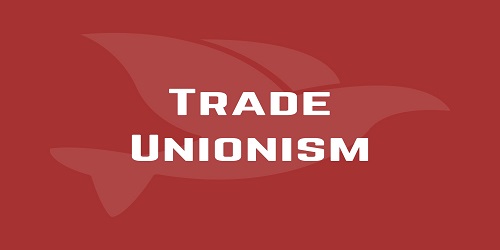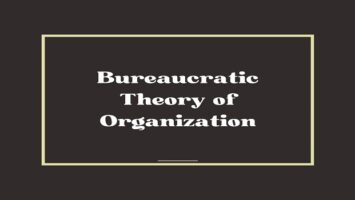Behaviouralism in Public Administration:
The emergence and subsequent popularity of the Behavioural Approach in Public Administration have been a significant breakthrough in the growth and evolution of organizations. Its contribution to the study of organization has been quite substantial. It provides a new angle, a new paradigm to look at the organization. It has been responsible for bringing the concepts of values, facts, and rationality into administrative thought. It deals with the ‘inside human being with a focus on the place of his values and rationality in the working of an organization. An understanding of the ‘inside human being’ is as important as an understanding of the ‘inside of the organization’.
In the sphere of public administration, Hervert Simon analyses human behavior in terms of the role of its value preferences in the decision-making process. To Simon, administration is the art of getting things done. He, therefore, lays emphasis on the process and methods that ensure action. Decision-making deals with the process of choice which leads to action. Simon points out that without an adequate understanding of this dimension, which is rooted in the behavior of men who are at work in the organization, the study of administration is destined to remain inadequate.
The Behavioural Approach in Public Administration is concerned with the decision-making process that precedes action. The need for decision-making arises when there are several alternatives out of which the decision-maker has to choose one, which according to him can secure best the desired objectives. It involves a review of the pros and cons of the available alternative courses of action. In so doing, the decision-maker is influenced by his view of the environment, his perceptions, and values, the internal and external settings, the situation, the spheres of his competence, motivation, and information. The behavioral approach concentrates on the study of the dynamism of decision-making in an organization.
The Behavioural Approach believes that the working of every organization depends on the manner in which decision-making is done and the behavior of employees is influenced. It is for these reasons that the Behavioural Approach emphasizes that an insight into the structure and function of an organization can best be gained by analyzing the manner in which the decision and behavior of such employees are influenced within and by the organization.
An organization has a specific purpose. The purpose provides the direction and determines the things that are to be done. Simon maintains that in so far as decisions lead the selectors towards their final goals, they are involved in the implementation of such goals as are called factual judgments. Value is an expression of preference. Fcats on the other hand are statements of reality.
The concept of purposiveness involves the notion of a hierarchy of decisions. Behavior is purposive in so far as it is guided by the general goals and objectives of the organization. In an organization, decision-making is a systematic activity. It involves three important steps.
- Segregating the elements in the decision-making process.
- Establishing the procedure to select an alternative as a decision.
- Determination of decisions and communication of these to the other members of the organization.
Human behavior involves a conscious or semi-conscious selection of a particular alternative that is physically possible and organizationally effective. The decision-making process involves three important phases of activity. These are:
- Intelligence Activity- which involves finding occasions to take decisions.
- Design Activity- which involves the development of alternatives to do a particular job.
- Choice Activity- which involves choosing or selecting one of the alternatives or course factors keeping in view the organizational goal.
The effectiveness of the course of action depends upon the capacity of that decision to attain the goals that are set. The correct choice is related to the individual’s performance. This gives rise to and deals with the question of values. The effectiveness depends upon the information available at a given point of time. This is related to the question of facts.
Further, the behavior of human decision-makers involves several practices. The Behavioural Approach lists the following as practices developed from the structuring of behavioral choices.
- Specialization.
- Co-ordination.
- Expertise.
- Responsibility.
The Modes which Influence the Behaviour:
The Behavioural Approach in Public Administration also involves the study of factors/modes which influence the decision-making behavior of the decision-maker in an organization. It lists the following modes which affect the behavior of the decision-makers in an organization.
(1) Authority- Decision makers and all members of an organization are bound by the limits of their legitimate power i.e., authority. The organizational culture holds the myth of authority in such a way that the subordinates carry out the orders coming from their superiors without any questions. The concept of authority influences their behavior to a very large extent.
(2) Organization Loyalties- In any organization, its members tend to identify themselves with their work group. This is an important determinant of human behavior in an organization.
(3) Criterion of Efficiency- The concept of efficiency is a means for the attainment of the desired goals in desired and settled forms. The efficiency of the employee is measured in terms of his efficiency in securing the desired goals of the organization for which he has been working. The efficiency criterion is largely neutral as to what goals are to be attained.
(4) Advice and Information- The organization which is capable of facilitating effective communication cannot only condition the behavioral choice but also ensures uniformity of judgment and action. The behavior of the members of an organization is conditioned by the advice and information which is available to them as members of the organization.
(5) Training- Training is a device that prepares members of an organization to take satisfactory decisions. It equips an individual with the methods of using his discretion in conformity with the design and goals of the organization. Human behavior in an organization is greatly influenced by the training imparted to the members of the organization from time to time during their tenure of service.
To sum up, we can say that the Behavioural Approach in Public Administration advocates the study of human behavior in organizations. It regards decision-making as the most critical process of an organization and seeks to study it in terms of the behavior of the members of the organization i.e., the decision-making process. Their behavior is to be analyzed as decision-makers in a situation acting on the basis of their values and factual judgments, and the decision-making process is to be analyzed on the basis of the concept of activity and purposiveness.
Criticism: In spite of its valuable contribution, the Behavioural Approach has come under considerable attack. It has been criticized mainly on the following grounds:
(1) The conceptual framework is not adequate. It has not offered an adequate framework to explain the organizational phenomenon.
(2) It delinks an organization from its wider setting by ignoring the racial, historical, political, economic, geographical, and cultural factors.
(3) This approach is general and not of practical relevance. It hardly helps the practitioner to know how the working of an organization can be improved.
(4) The study of decision-making is highly problematic. It involves several difficulties:
- First, it involves the study of a large number of variables which makes the exercise very complicated.
- Secondly, it is quite difficult to pinpoint the real decision actors.
- Thirdly, organizational decision-making is also influenced by non-members or external actors and groups.
- Fourthly, the study of values, perceptions, and judgments of the decision actors is a difficult exercise.
- Fifthly, irrational factors of the decision-making behavior of the decision-makers cannot be fully analyzed.
- Sixthly, the decision-making process is a highly complex process. It has psychological, intellectual, social, cultural, and even quasi-mechanical dimensions which do not admit easy analysis.
- The Behavioural Approach focuses attention on one aspect of public administration i.e., organizational decision-making (Decision-making Process) and the decision-making behavior of the decision-makers. It ignores other aspects of public administration.
As such, the Behavioural Approach can be used only in a limited way in Public Administration. It can be used for analyzing the organizational behavior of the members of the administrative organization of the state in respect of policy formulation and decision-making. In this res[etc, it can provide useful knowledge for developing administrative theory.









Comments (No)